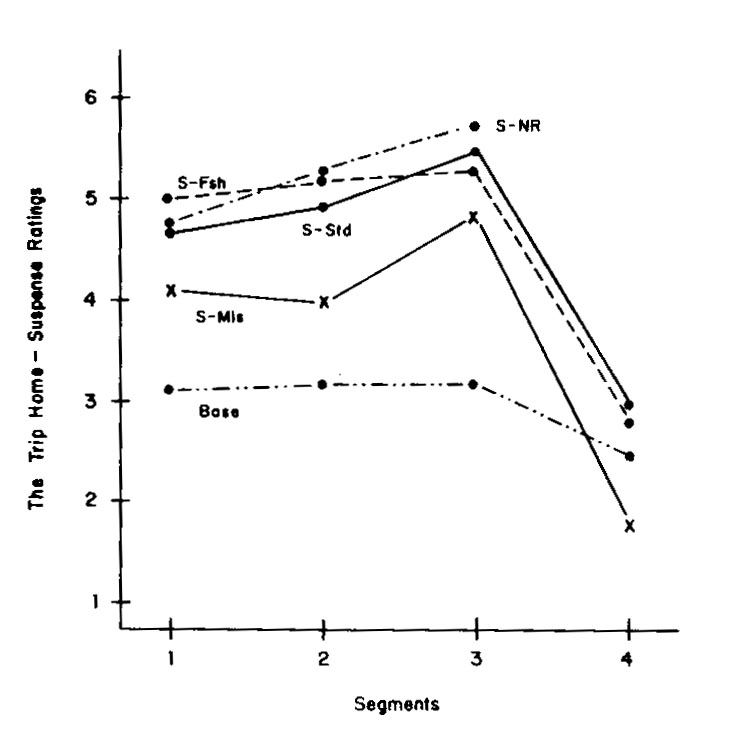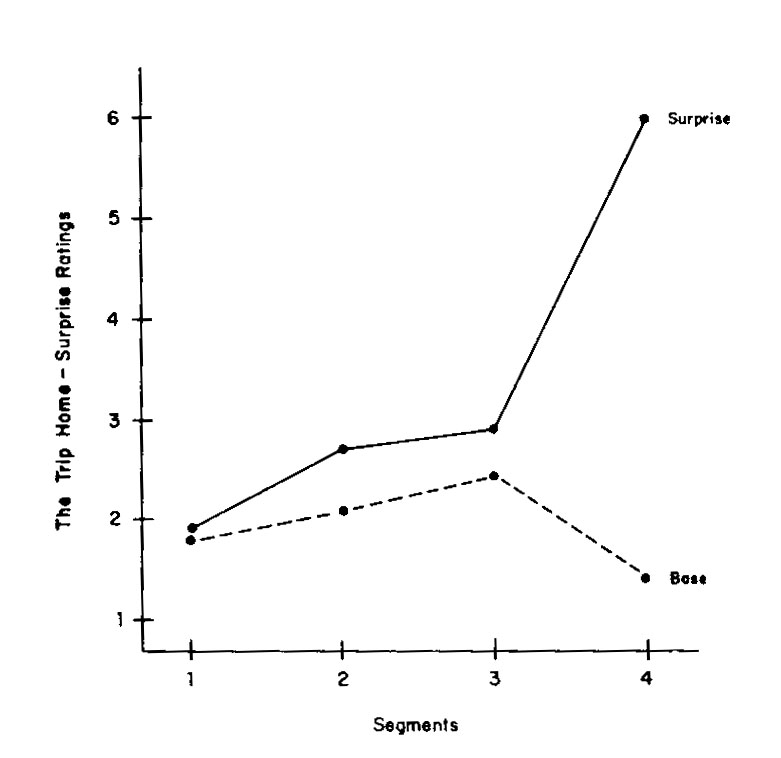Brewer & Lichtenstein (1981)
structural affect theory
Brewer, W. F., & Lichtenstein, E. H. (1981). Event schemas, story schemas, and story grammars. J. Long, & A. Baddeley (Eds.), Attention and Performance IX (pp. 363-379). Hillsdale, NJ: Lawrence Erlbaum.
Story: "The Trip Home" (written for empirical study)
Presented on four pages; participants provide ratings after each page, and at end (my summary of pages 2-4)
1. Sam Levine got into his old VW as the clock in City
Hall struck six. Across the street a man waiting in a new Cadillac pushed
a button, activating by remote control a 10-minute timer on a bomb hidden
in Levine's car.
Sam was tired and dreaded the 20-minute
drive home. He had arrived at the office several hours earlier than the rest
of the staff. The job of District Attorney was more work than he had thought
it would be when he ran for the office. Taking on the Mob in court was a tough,
exhausting job.
2. Sam decides to take a shortcut, so that he will be home in 10 minutes
3. Sam drives over road full of potholes. Hears a noise from the car. Finds a rock stuck in wheelrim; removes it. Sees it is 6:09 on his watch.
4. Drives on, arrives home, walks indoors. The WV explodes.
Versions of story:
- Base (no bomb; Sam just drives home)
- Suspense Standard (as above)
- Suspense Foreshadowing (adds that Sam will be driving down a dangerous, pot-holed road)
- Suspense Misarranged (outcome described on first page)
- Suspense No Resolution (last page omitted)
- Surprise (planting of bomb in p. 1 omitted, only described after explosion on p. 4)
After each page ratings on 7-point scale for Suspense and Surprise
At end of story, ratings for Story Liking, Whether a Story, etc.
Suspense Ratings

Conditions: Base; suspense standard (S-Std); suspense misarranged (S-Mis); suspense foreshadowing (S-Fsh); suspense no resolution (S-NR)
Surprise ratings

Mean Structural Ratings for Each Story Version
Liking A Story Base 2.15 2.45 Suspense Standard 4.85 5.05 Suspense Foreshadowing 4.30 4.45 Suspense Misarranged 3.65 4.50 Suspense No Resolution 3.85 2.75 Surprise 4.30 4.30
Document prepared March 11th 2007